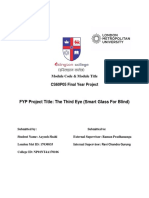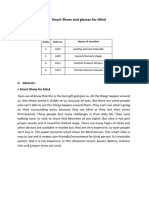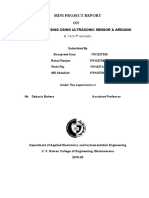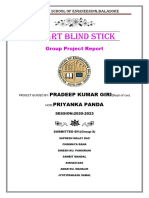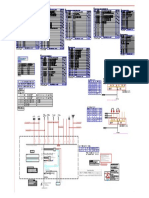0% found this document useful (0 votes)
74 views16 pagesMinor
The document describes a proposed design for smart blind eye glasses that use sensors to help visually impaired individuals. The glasses would use ultrasonic sensors to detect obstacles in multiple directions and alert the user via buzzer or vibration motor. An Arduino board would process the sensor data and trigger the alerts. The aim is to create a low-cost, lightweight, customizable system that allows blind people to navigate independently with improved safety. Previous research had limitations like short detection ranges or high costs that this new design seeks to address.
Uploaded by
openhousehereCopyright
© © All Rights Reserved
We take content rights seriously. If you suspect this is your content, claim it here.
Available Formats
Download as PPTX, PDF, TXT or read online on Scribd
0% found this document useful (0 votes)
74 views16 pagesMinor
The document describes a proposed design for smart blind eye glasses that use sensors to help visually impaired individuals. The glasses would use ultrasonic sensors to detect obstacles in multiple directions and alert the user via buzzer or vibration motor. An Arduino board would process the sensor data and trigger the alerts. The aim is to create a low-cost, lightweight, customizable system that allows blind people to navigate independently with improved safety. Previous research had limitations like short detection ranges or high costs that this new design seeks to address.
Uploaded by
openhousehereCopyright
© © All Rights Reserved
We take content rights seriously. If you suspect this is your content, claim it here.
Available Formats
Download as PPTX, PDF, TXT or read online on Scribd
/ 16



